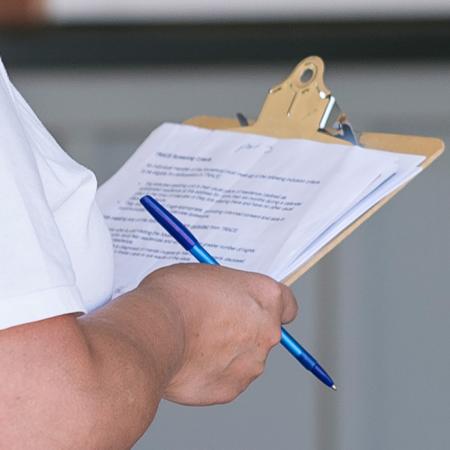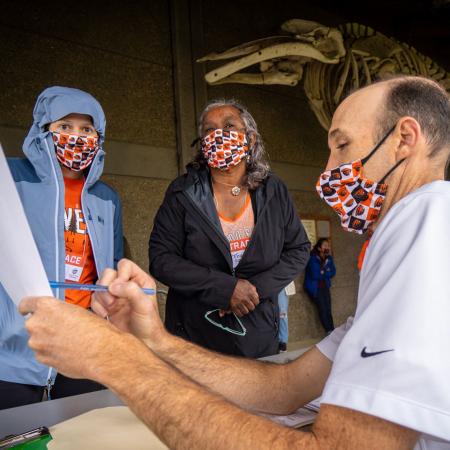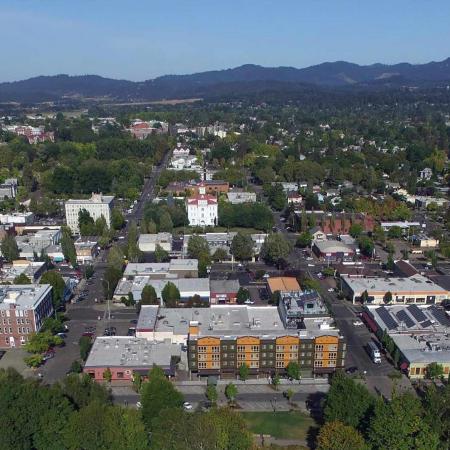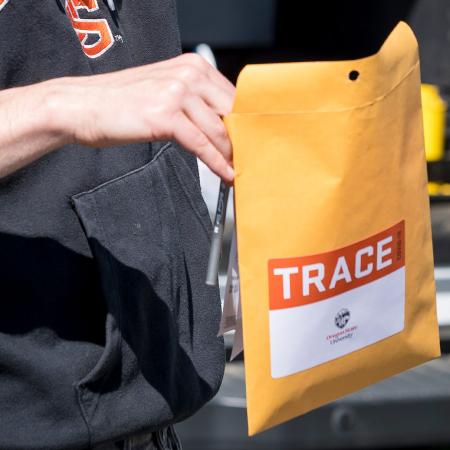CORVALLIS, Ore. – Results from door-to-door sampling Nov. 7 and 8 by Oregon State University and the University of Oregon suggest that about five people per 1,000 in Eugene at the time had the virus that causes COVID-19.
Thirty TRACE Community field teams visited 30 Eugene neighborhoods, getting samples from 304 households and 463 people. There were zero positive results, but based on other data regarding SARS-CoV-2 infections in Eugene, models used by the researchers produced the five-per-1,000 prevalence estimate, with a 95% likelihood of the number being between one and 14.
“In estimating how many people were infected we used a prevalence model that took into account sampling results as well as other information to understand what is happening in the population at large,” said Ben Dalziel, an assistant professor in OSU’s College of Science and the TRACE project leader.
TRACE results are peer-reviewed by scientists at Oregon State University and two other universities, none of whom is associated with the project.
“It is good news that the prevalence in Eugene over Nov. 7 and 8 was relatively low,” said Leslie Leve, associate vice president for research and professor in the College of Education at University of Oregon. “The prevalence is consistent with community members following public and personal health guidelines. Following these guidelines is especially important now that the cool, wet weather is here, people are spending more time inside, and may be planning for the holidays.”
Eugene has a population of 172,000 and makes up nearly half of Lane County’s population of 382,000. Lane County has reported 37 COVID-19 fatalities and 3,582 cases, according to the Oregon Health Authority. Negative tests in Lane County number 91,967.
While five cases in 1,000 may seem like a low number, it is important to remember that prevalence is not the same as COVID-19 risk, said Jeff Bethel, associate professor in OSU’s College of Public Health and Human Sciences and part of the TRACE leadership team.
“Prevalence only indicates how relatively abundant the virus is in a target population,” Bethel said. “It doesn’t tell you your likelihood of getting the virus but can help you understand the likelihood of encountering someone with the virus. The more people you encounter, the greater the likelihood that you will be in contact with someone who has the virus. Social distancing, wearing a mask and washing your hands will help, but it is a numbers game: The more people you are around, the greater the odds of encountering an infected person.”
The OSU-led public health project, known as TRACE-COVID-19, began in April in Corvallis and has now featured 10 weekends of sampling in multiple Oregon cities, including the two days in Eugene.
“We are very grateful to the Eugene community for participating in the project,” said Dr. Patrick Luedtke, Lane County’s senior public health officer. “It is only through strong community engagement that any public health project can succeed.”
The TRACE project began as a collaboration of five OSU colleges – Science, Agricultural Sciences, the Carlson College of Veterinary Medicine, Engineering, and Public Health and Human Sciences – plus the OSU Center for Genome Research and Biocomputing. The project works in partnership with the county health departments around the state, including Lane County Public Health, which requested that the TRACE team come to Eugene.
The diagnostic testing component of TRACE operates through a partnership between the Oregon Veterinary Diagnostic Laboratory, which is located at OSU, and Willamette Valley Toxicology.
TRACE-COVID-19 has received funding from OSU, the David and Lucile Packard Foundation, PacificSource Health Plans and the Oregon Health Authority and has been aided by work from the OSU Foundation and the OSU Alumni Association.
For more information on the project, visit the TRACE-COVID-19 website. The site includes a list of frequently asked questions.
This story was originally posted by the Oregon State University newsroom.




